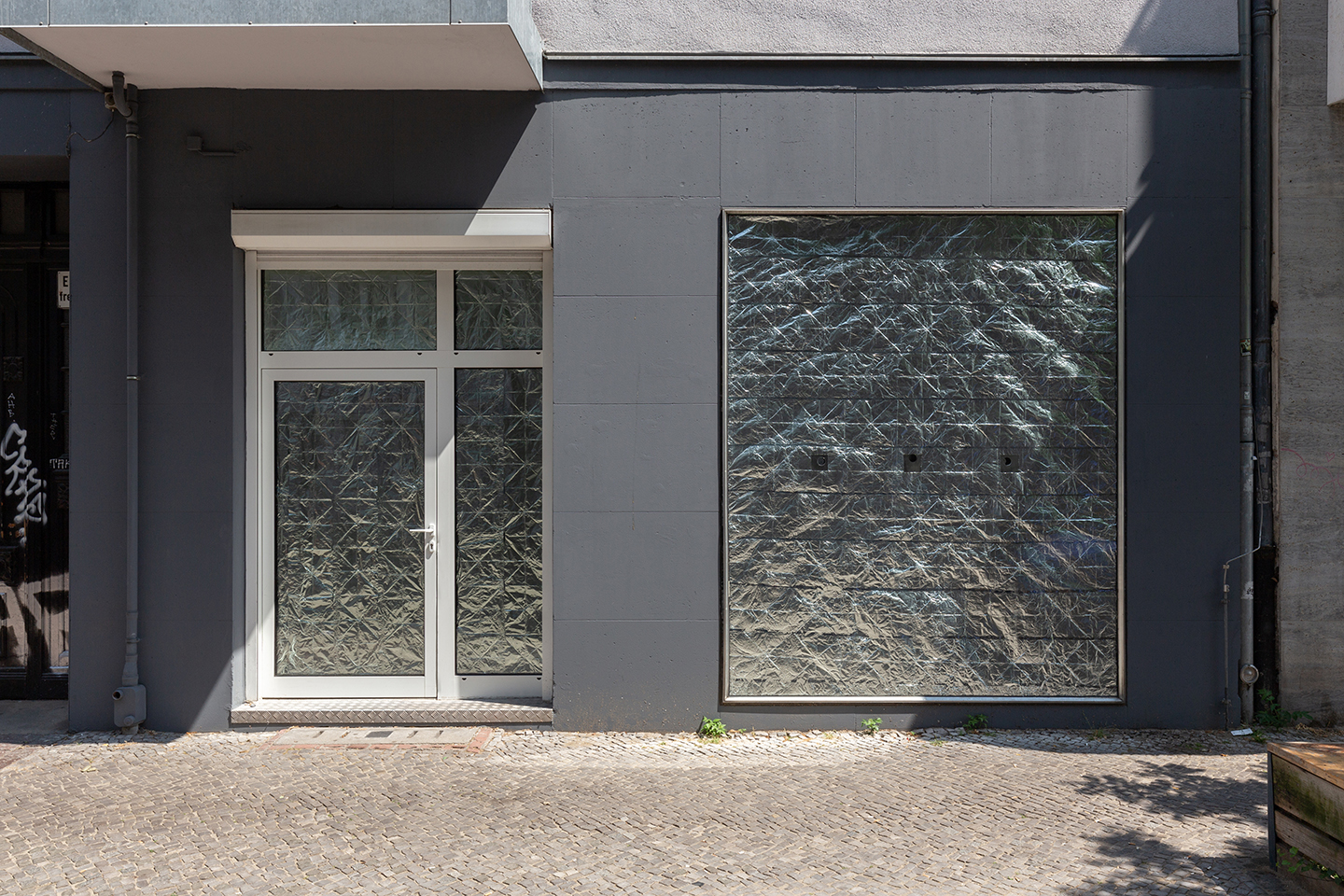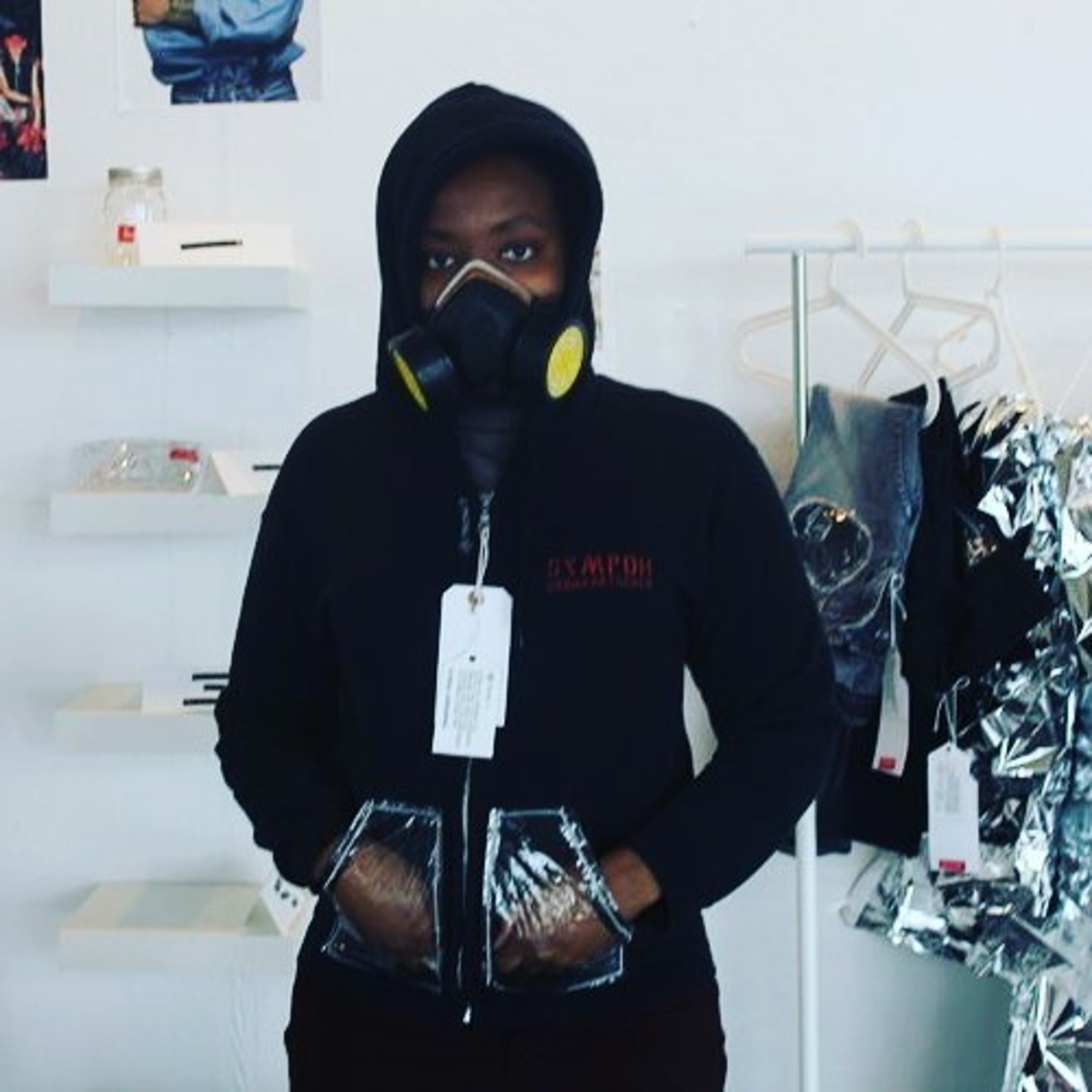Making Unsharp?

By Linda Zhang // Studio Pararaum
Edited by Miriam Ho
We often think of devices as neutral instruments of measure and surveillance, invented to help us better understand and categorize the world, stabilize it, set things in place—not unsettle them. However, on a closer look, we discover that devices are only assumed to be objective and neutral due to their technical, mechanical, and often scientific association. This misinterpretation can be attributed to the inaccurate premise that all data is indexical, that it is reliant upon an actual connection to a real thing which previously existed.
The semiotic theorist and philosopher Charles Sanders Peirce differentiates between indexicality and iconicity which, in contrast, relies on likeness or resemblance. (1) Indexical devices are stable and fixed because they convert the physicality of things directly into information. For instance, medical devices interpret and record pulse rate, temperature, steps per hour, and so forth. There is simply no way to fudge the number “two” to resemble the number “three.” Doing so would necessarily compromise the function of the device. As such, these numbers remain absolute, making them objective and purportedly neutral. Unlike icons, there is very little room for manipulation with regards to indexical devices. Even the slightest manipulation would compromise the function, thus, the neutrality of the device.
In contrast, devices that rely upon iconicity are highly volatile and open to manipulation. Since an icon only needs to resemble something, it is freed from the requirement of maintaining a real connection to reality. For example, computer generated imagery (CGI) need not depend upon a physical connection to a thing, but rather on a resemblance to our past experiences as defined by our memories and imagination. However, most iconic devices are also indexical. The camera and the images it produces is one such example. As such, the purported neutrality of the camera’s images actually comes from an intersection of iconicity with indexicality. Thus, it is the conflation of iconicity and indexicality that complicates delineations between subjectivity and objectivity, calling into question definitions of forgery and truth in representation.
The camera obscura, and eventually photography, emerged out of an entanglement of discoveries in geometry, mathematics, and optics beginning with the fifteenth-century invention (discovery) of linear perspective. Early applications of perspective were seen as a means of obtaining a purely indexical, and thus objective, translations of reality. Early perspectival devices were used by painters to mimetically plot a subject onto a Cartesian grid, allowing the artist to achieve a heightened realism and naturalism. (2) Similarly, the invention of the camera was celebrated for the promise of liberating the image from subjectivity and thereby allowing us to “truly” see external reality. However, as cinema and media theorist Tom Gunning argues, even before digital photography and contemporary post-production, traditional film photographers manipulated “the mediation of lens, film stock, exposure rate, type of shutter, process of developing and of printing.” (3) In other words, since the beginning photographers have found opportunities for subjective invention and departure, all of which can be accomplished without altering the indexical precision of the camera or its claim to truth-telling. Thus, all imaging devices convey more than just indexical information. They are always necessarily entangled with iconicity and as such always have room for manipulation. Moreover, it is the user who determines its neutrality or its inventive deception.
Today, this has become increasingly foregrounded with the rise of digital media and digital post-(re)production. As devices increase in precision, we are confronted with just how inaccurate and far from objectivity we really are. Today, emergent digital technologies allow creators of CGI to produce (almost) hyper realistic imagery, both still and cinematic. However, as German filmmaker Harun Farocki indicates in his video installation Parallel I, “the leaves and branches [of CGI trees] have barely learned to move, and already the question is whether they move too steadily . . . In cinema, there is the wind that blows and wind blown by a wind machine. With computer images there is only one kind of wind, a new constructivism.” [4] In other words, digital media has further revealed our quest for realism as a moving target, moving further and further away the closer we get and the question of representation to be more subjective than ever before. Architectural historian Alberto Perez-Gomez argues:
While descriptive geometry attempted a precise coincidence between the representation and the object, modern art remained fascinated by the enigmatic distance between the reality of the world and its projection. This fascination, with the immediate roots in nineteenth-century photography and in optical apparatuses such as the stereoscope, responded to the failure of a modern scientific mentality to acknowledge the unnamable dimension of representation. (5)
Yet, from within this enigmatic, unnamable dimension, imaging devices have the potential to grant creative license to representing, reinterpreting, and reimagining the world.
The phenomenological manipulation of the camera obscura was the starting point for Studio Pararaum’s installation, Making Unsharp? at the Institute of Endotic Research (TIER) in Berlin. In Making Unsharp? the camera obscura is a foil to the architectural optical device of the window. The window neatly separates the interior from exterior. The subject sees the object. The subject (interior) is assumed to be on one side of the screen, while the object (exterior) is on the other. From the vantage point of the gazing subject the window—as a surveillance device—frames what is on view (what is turned into a subservient object under surveillance) as well as who holds the power of the gaze. These are the inherent biases of perspective that Making Unsharp? hopes to challenge.
In their normative or default mode, perspective devices view the world from a single fixed point in space, time, and subjectivity. From the gaze of the painter, through the focal point of the subject (the vanishing point of the perspective), the world turns into a subservient “object” ready to be projected onto a two-dimensional plane as a picture for the consuming subject. In turn, because there is only one fixed gaze (subject) it also produces a singular and fixed reality. Left unchecked (unmanipulated), perspectival imaging devices leave no room for multiplicity, contradiction, or impasse.
From the street, Making Unsharp? appears only as a covering of aluminum over the window—deviant devices do not reveal their functions as view from the exterior. Entering into TIER’s gallery space, the room is dark. There is no artificial lighting in the installation and our eyes need time to adjust. All windows have been covered by reflective film. Slowly, the devices appear: a series of camera obscuras with pinholes formed by both the aluminum window covering as well as a series of reflective boxes. The camera obscura is traditionally constructed as a box. It contains a single pin-hole opening that allows light through to be projected on either an inside wall of the box, or on an additional screen inside the box. A second opening is placed on the other side of the box allowing the viewer to see the inverted project. Both traditional projections—camera obscura boxes which capture the projections on screens within the box—and unconventional projections, which use the entire room as a box, work together to allow the light from the room-scale camera obscura to form projections on the interior of the gallery space as well as the outer surfaces of the camera obscura boxes, making those surfaces at once containers and contents. Four camera obscura boxes with three pinholes each project multiple and overlapping moving images to challenge the notion of a singular fixed reality. Each camera obscura box aligns to one window pinhole, further fragmenting each window pinhole into three, producing nine moving projections with a total of twelve moving projections across the installation. To heighten this experience, the camera obscura boxes were made from mirrored materials, reflecting and projecting the nine moving images to produce an infinite multiplication of projections representing an infinite set of possible realities.
Playing on the malleability of iconicity paired with the truth claim of indexicality, Making Unsharp? subverts the camera obscura’s precision by producing increasingly imprecise, unsharp projections of reality. By reinventing the camera obscura, Making Unsharp? explores ways in which the exterior could become indistinguishable (unsharp) from the interior. Despite their inherent precision, tools and instruments are always susceptible to manipulation—and yet, because they have no subjectivity of their own, we persist in presuming that a device cannot lie. Making Unsharp? is an installation made to misbehave in order to reveal that a device is equally lacking in its capacity to tell the truth.
Perspectival representation is only one fictional construction of how to see external physical reality. Making Unsharp? reveals this fiction. Watching the multiple, layered and nested moving images of the exterior and hearing the sounds of the street through the window pane, Making Unsharp? houses the exterior infinitely and multiply within the interior itself. In the end, there is no longer a singular subject or object, nor is there outside or inside. The window is no longer a totalizing viewing device but instead offers itself as a window into our wonderfully complex world: filled with enriching contradictions, unsettling fleeting moments and in constant flux, always already becoming.
Endnotes
(1) Charles Sanders Peirce, “What Is a Sign?,” in The Essential Peirce Selected Philosophical Writings 2 (Indianapolis: Indiana University Press, 1998): 4-17.
(2) Alberto Perez-Gomez, “Question of representations: the poetic origin of architecture,” Arq 9, no. 3/4 (2005): 220.
(3) Tom Gunning, “What’s the Point of an Index, or Faking Photographs,” Nordicom Review 25, nos. 1–2 (2004): 40–41.
(4) Harun Farocki, Parallel I (2012; Germany: Harun Farocki Filmproduktion, 2012), DVD.
(5) Alberto Perez-Gomez, “Question of representations: the poetic origin of architecture,” Arq 9, no.3/4 (2005): 224.
Bio
Linda Zhang is an Assistant Professor at Ryerson SID and a principal at Studio Pararaum. She is the 2019 Multicultural Fellow at NCECA, a 2020 Artist in Residence at the European Ceramic Workcentre (EKWC), the 2017–2018 Boghosian Fellow at Syracuse University SOA as well as a 2017 Fellow at the Berlin Center for Art and Urbanistics. Her research areas include memory, cultural heritage, identity politics, material processes (namely casting and ceramics), and digital reproduction technologies.












